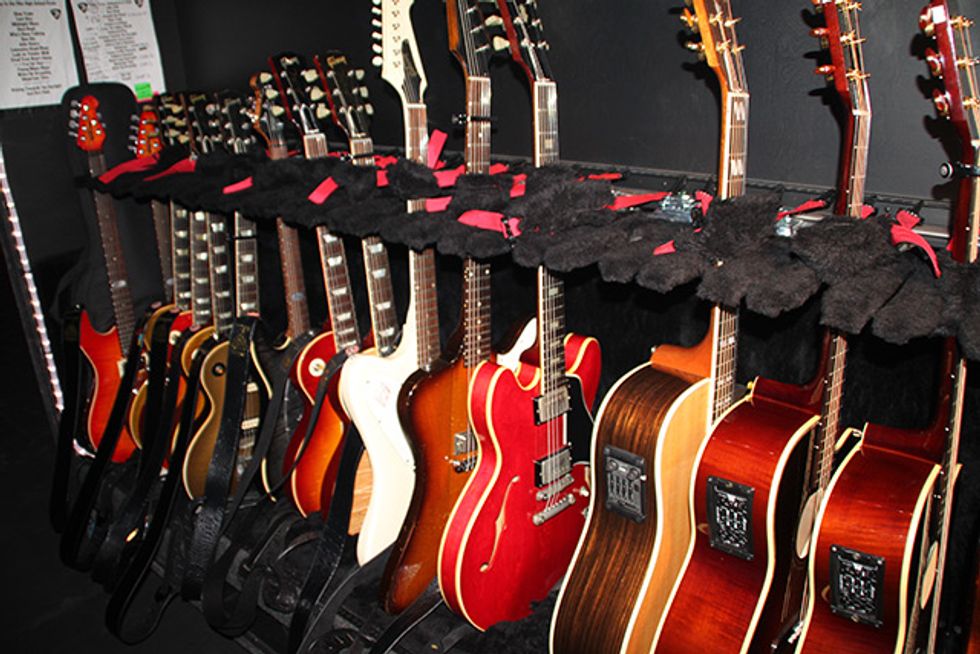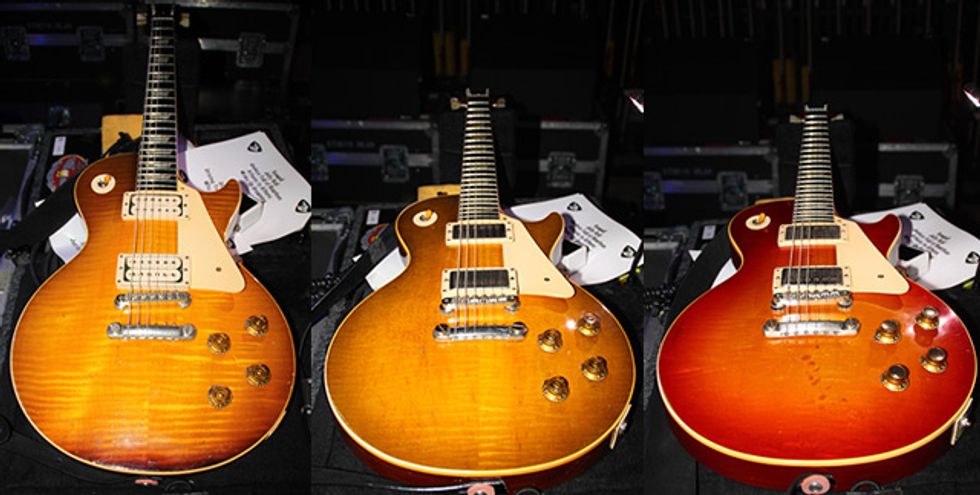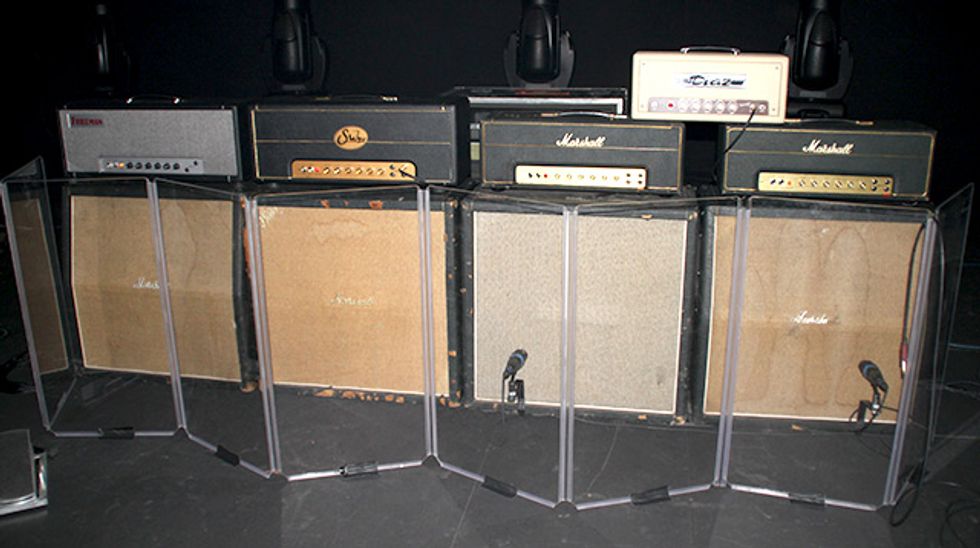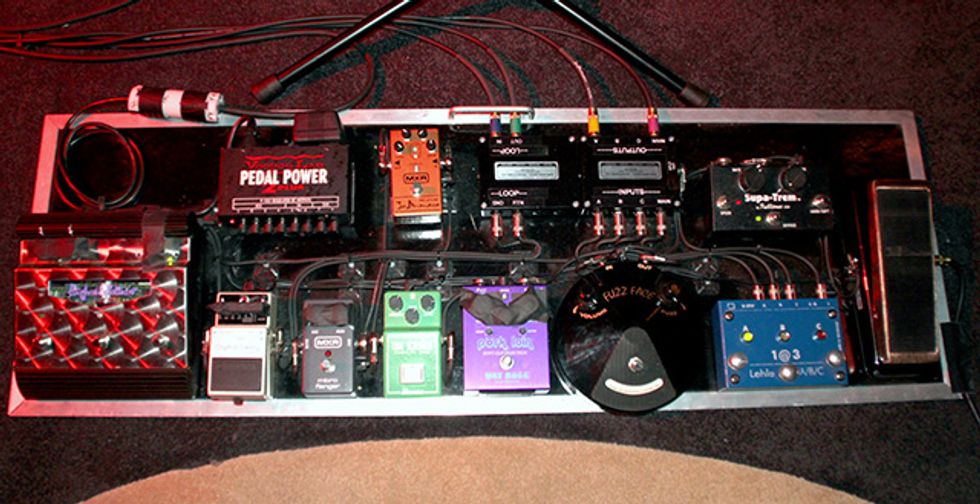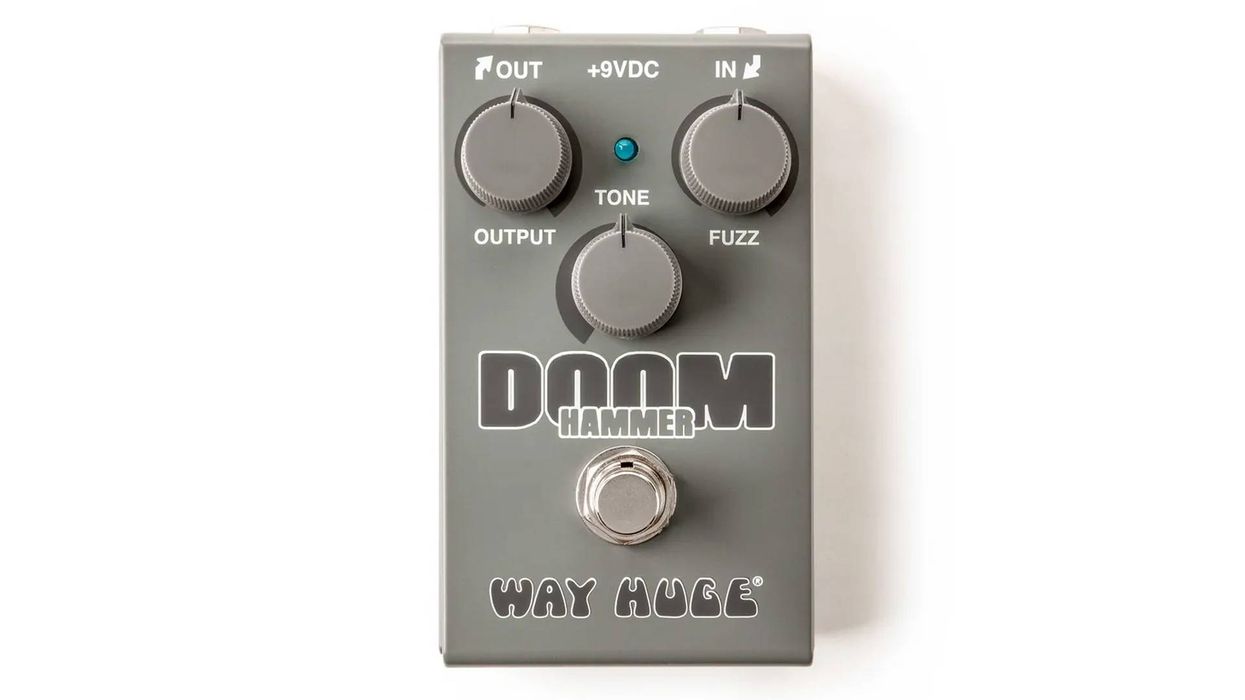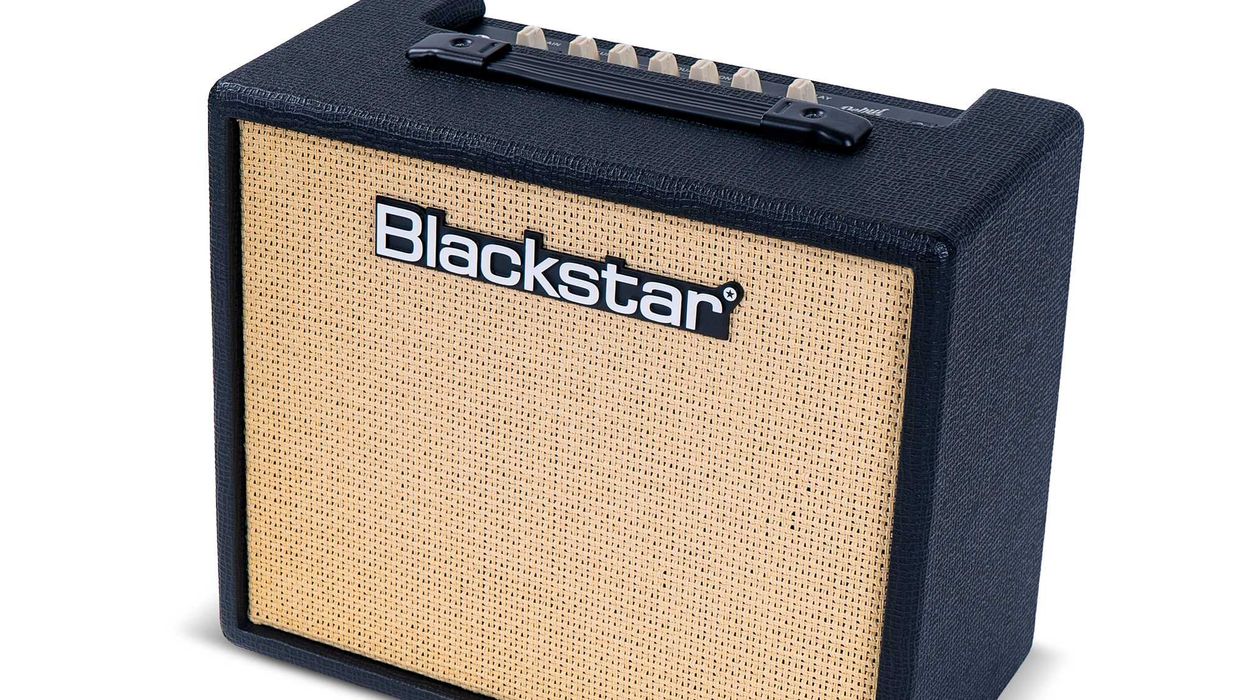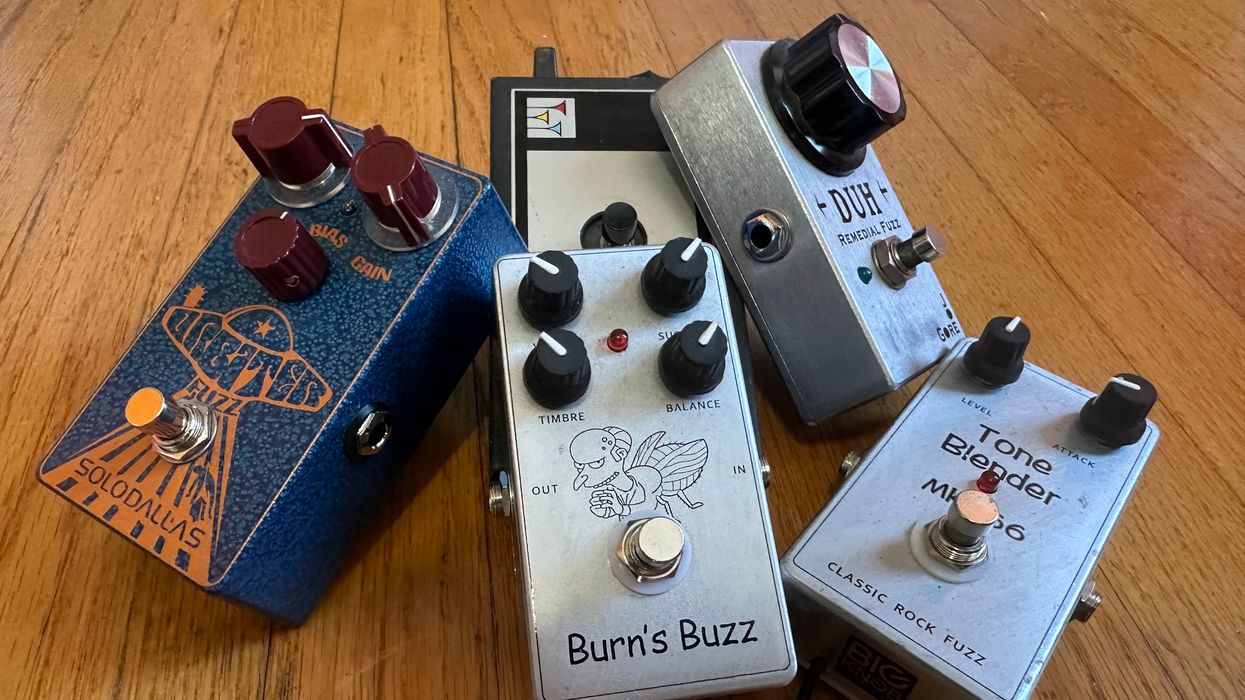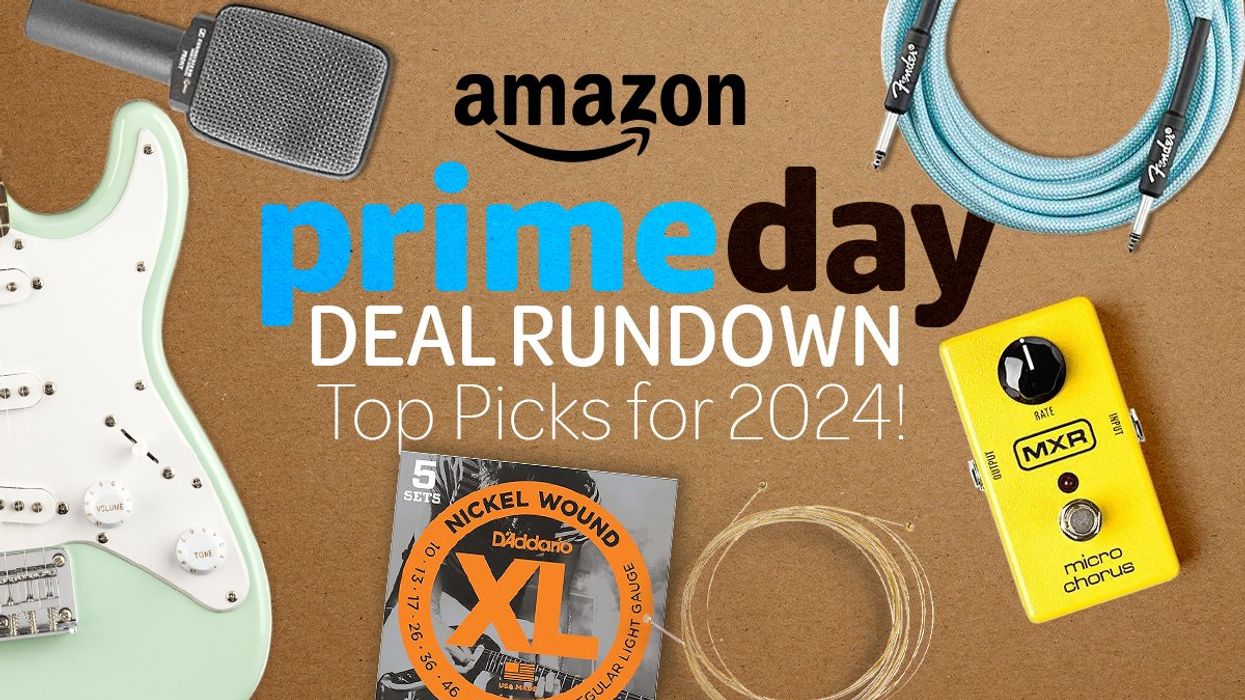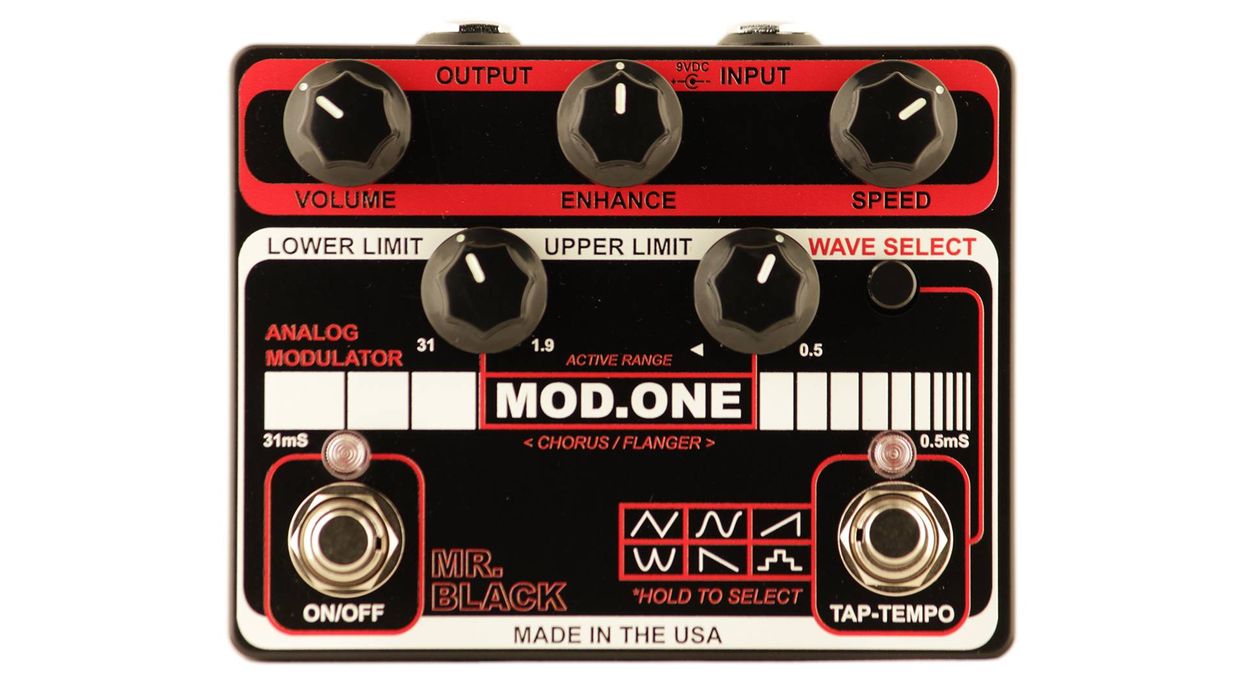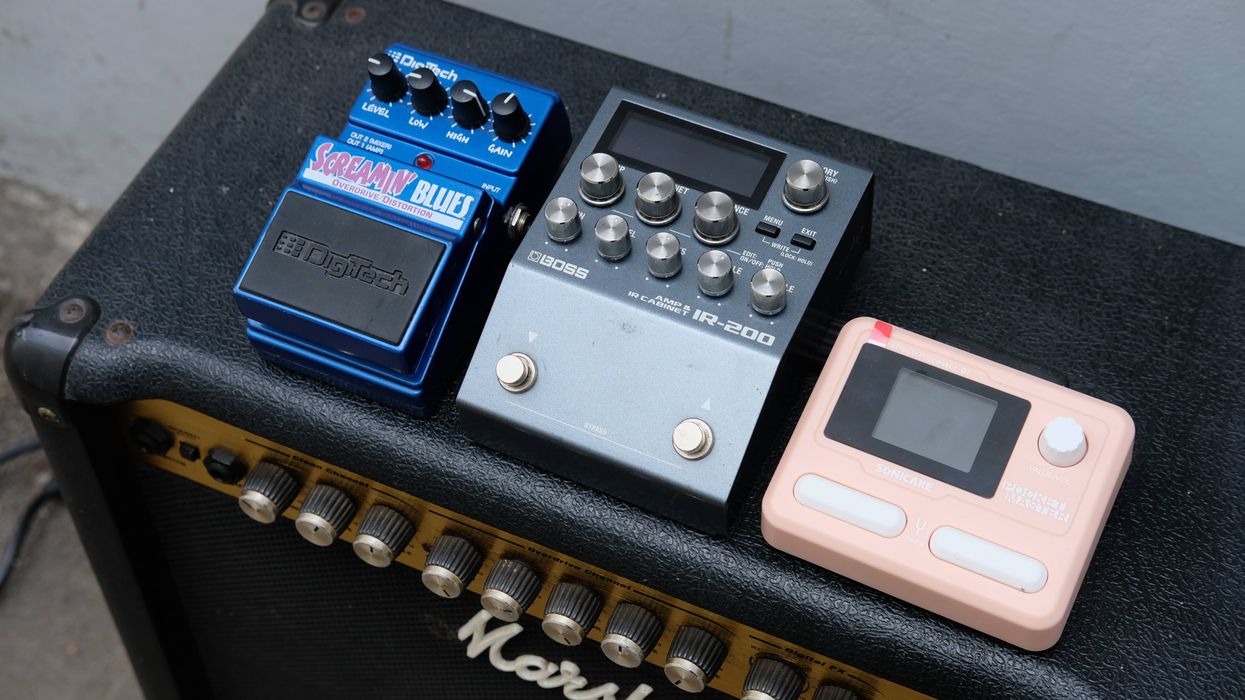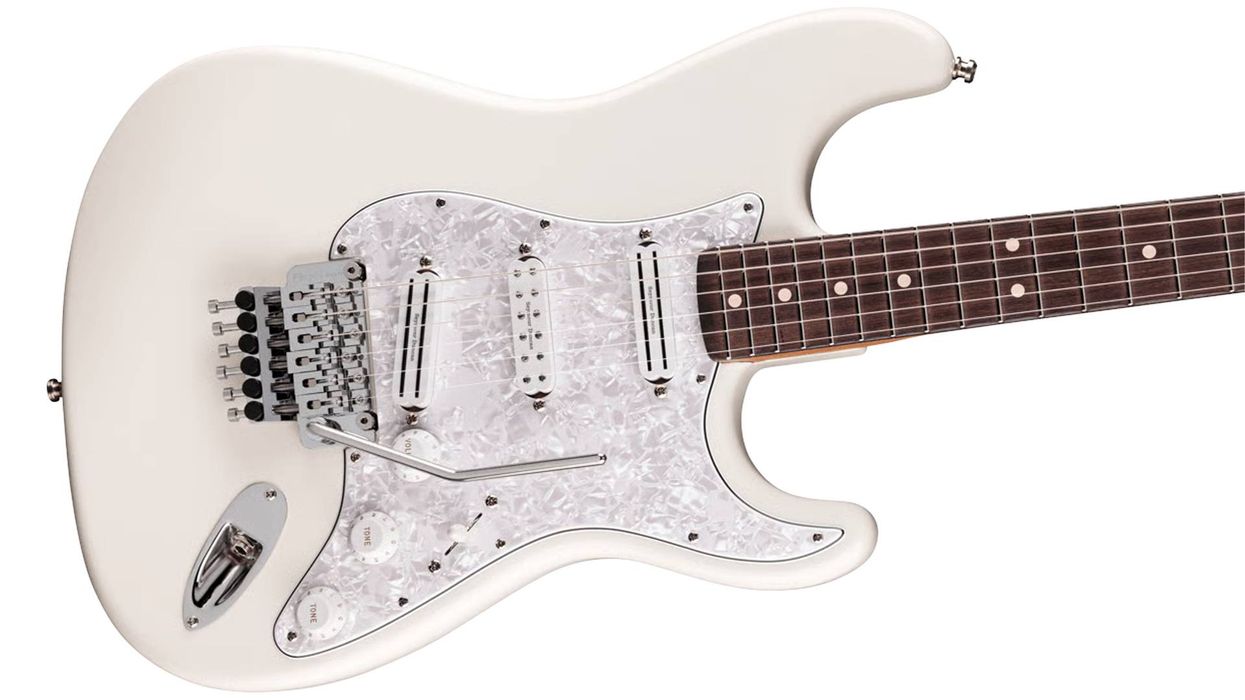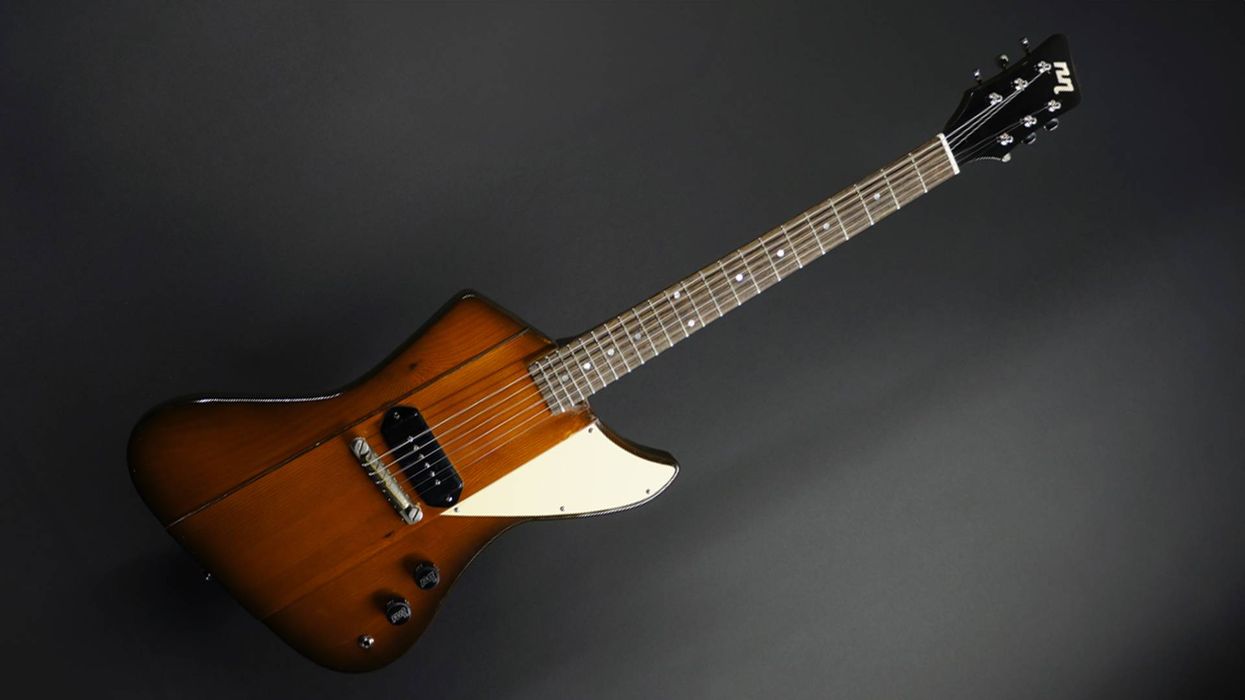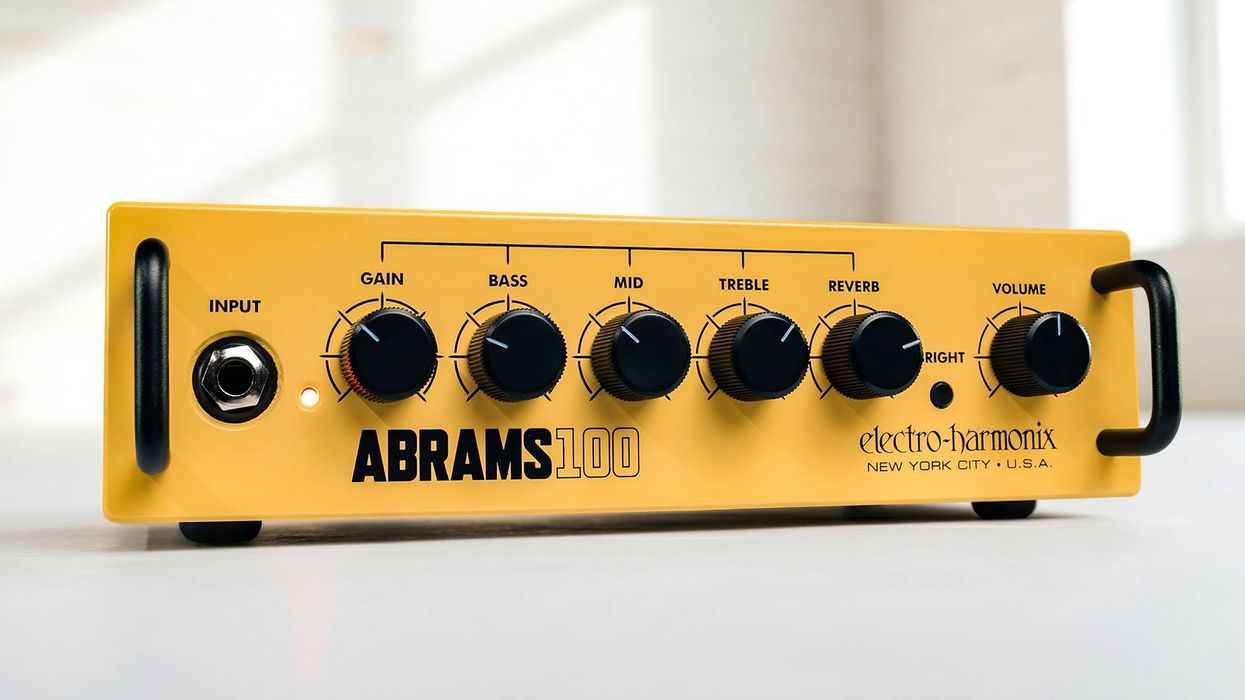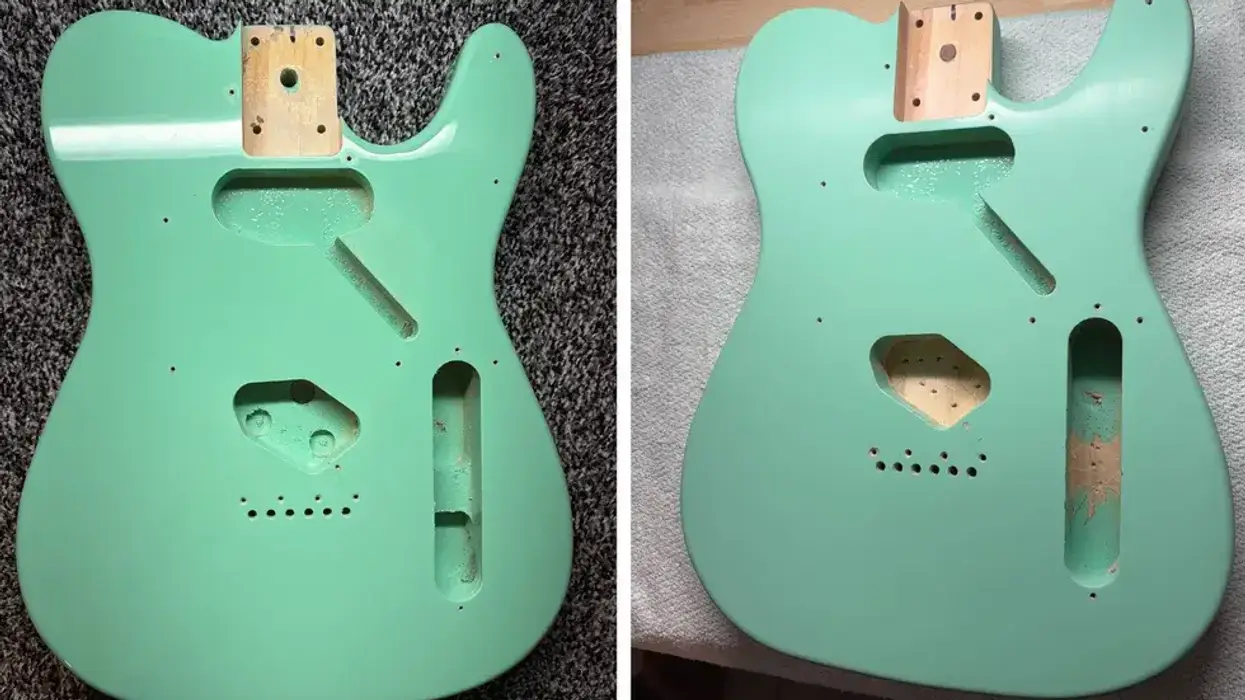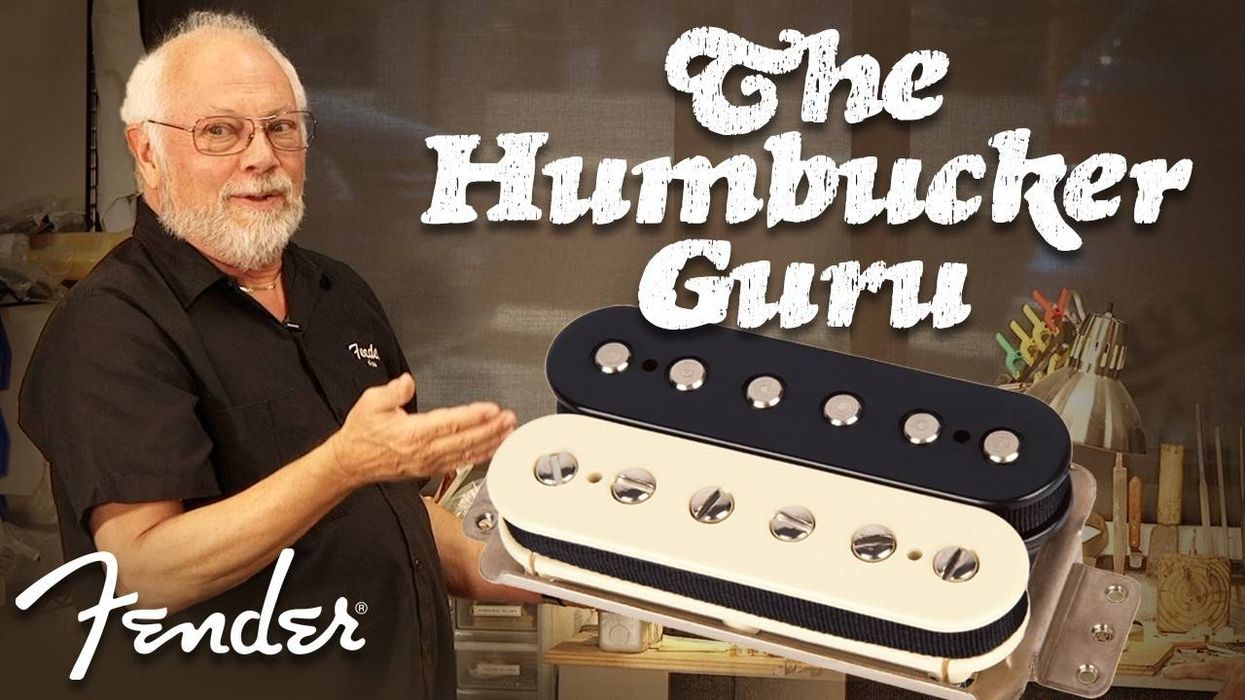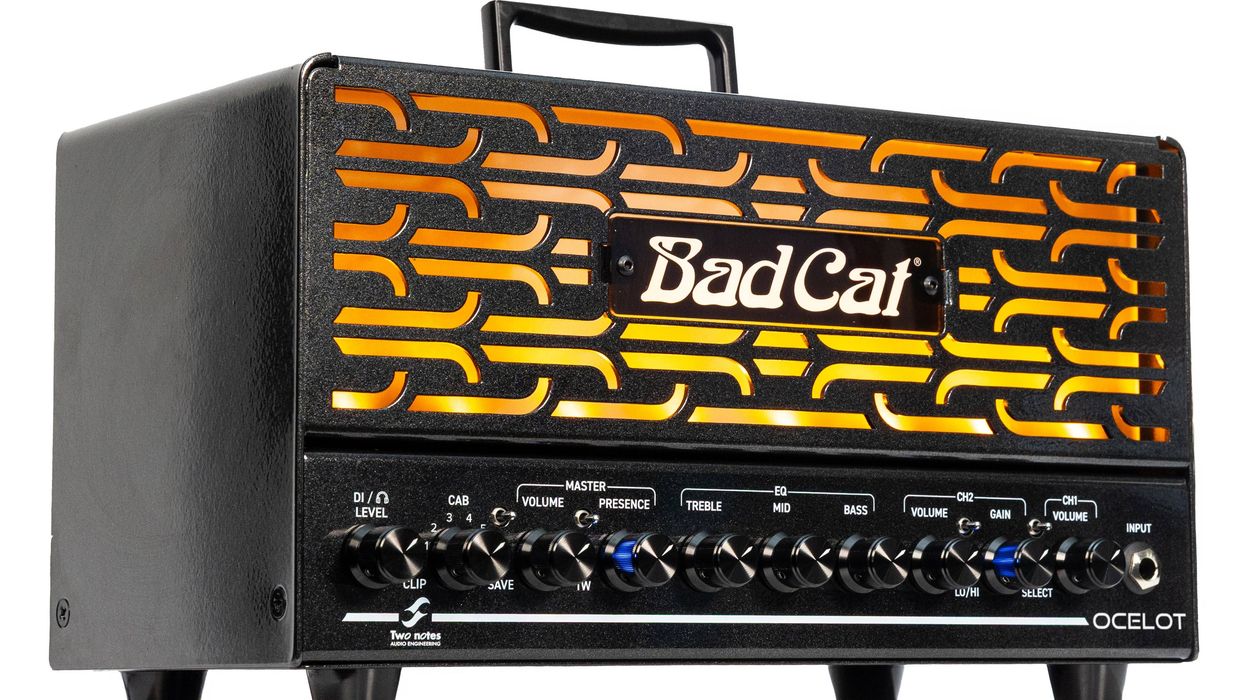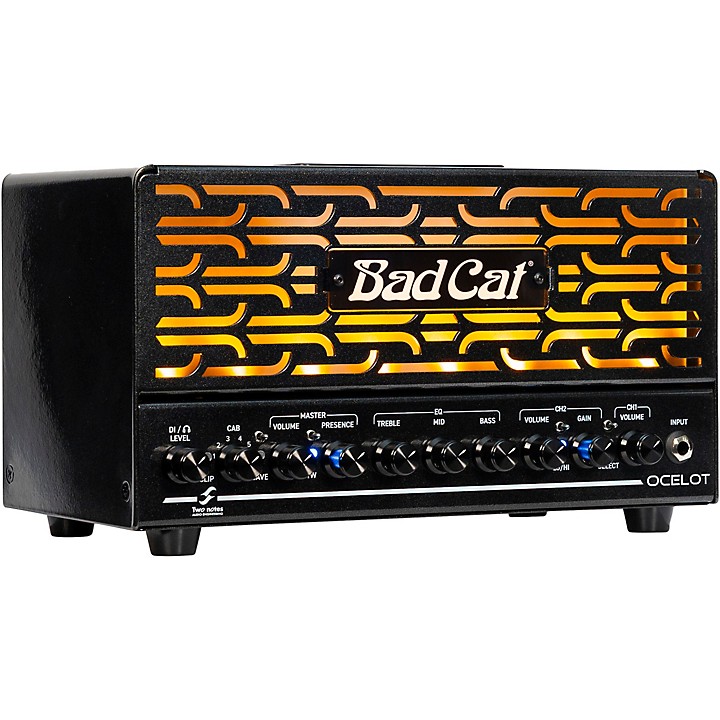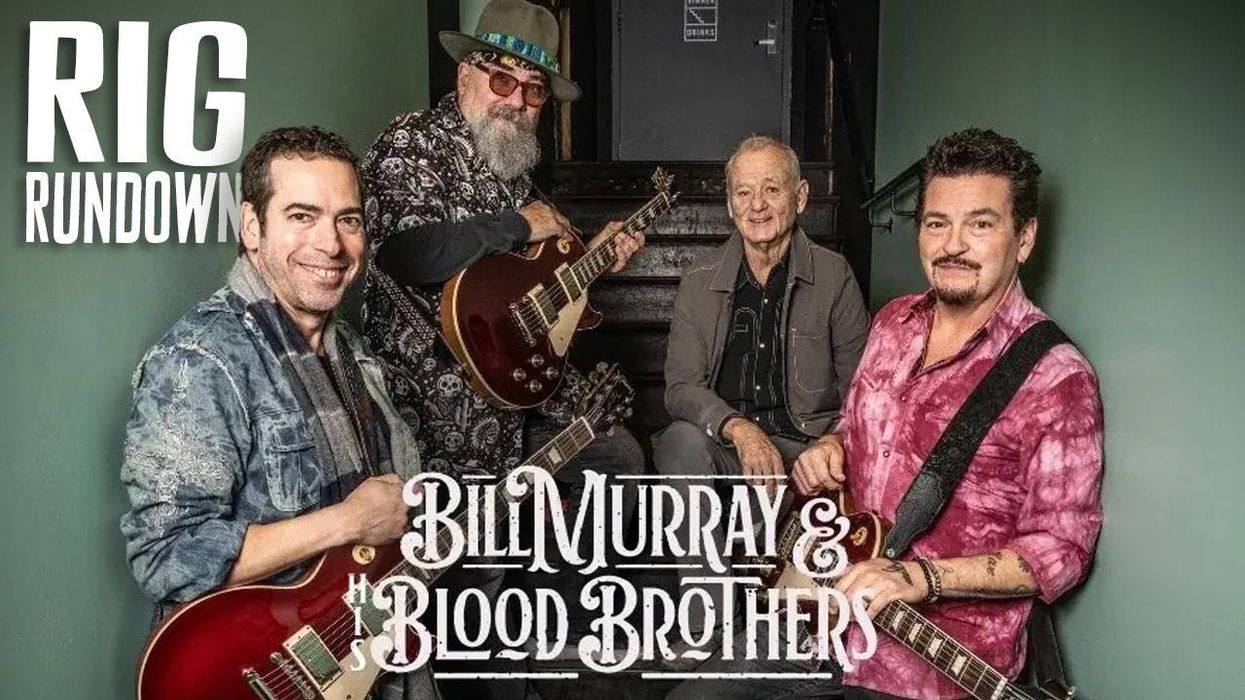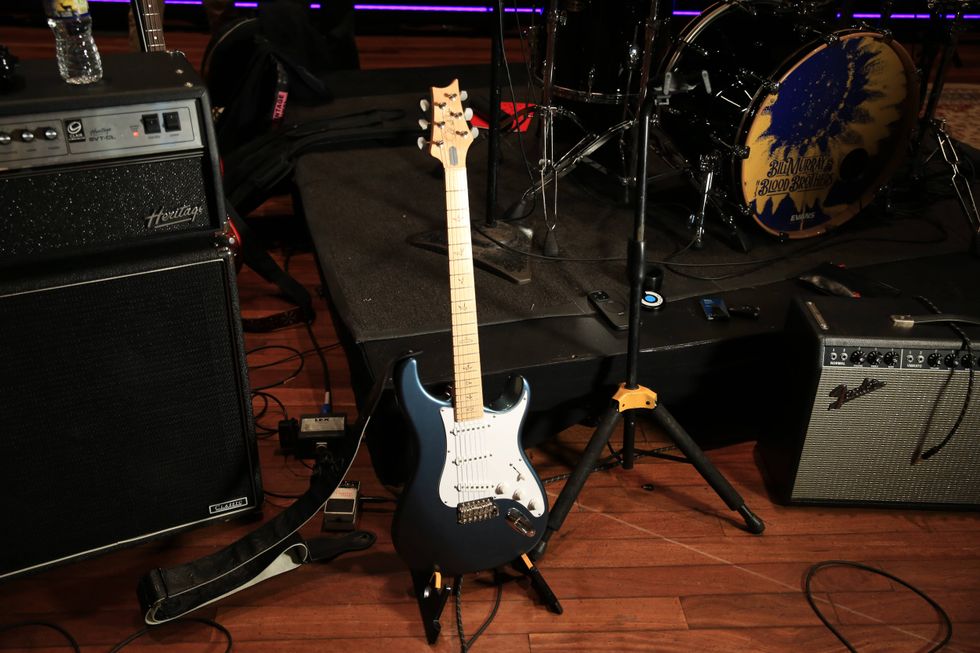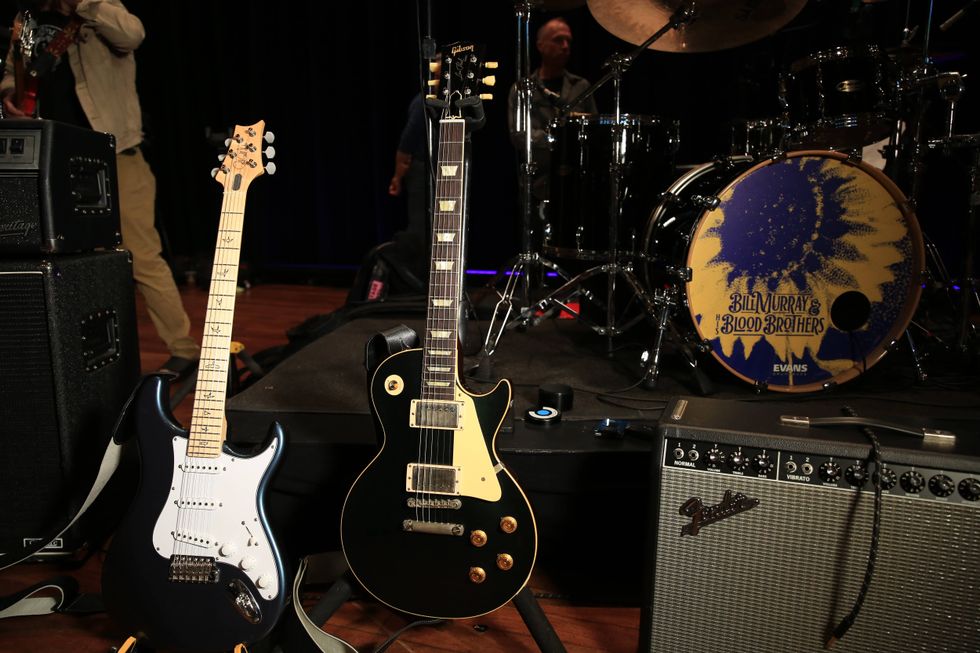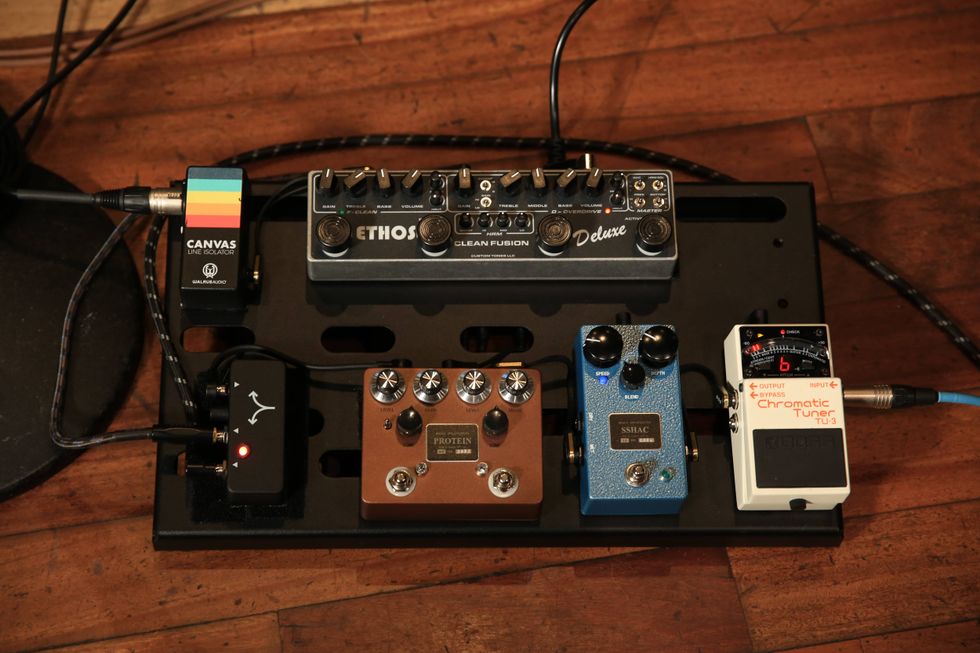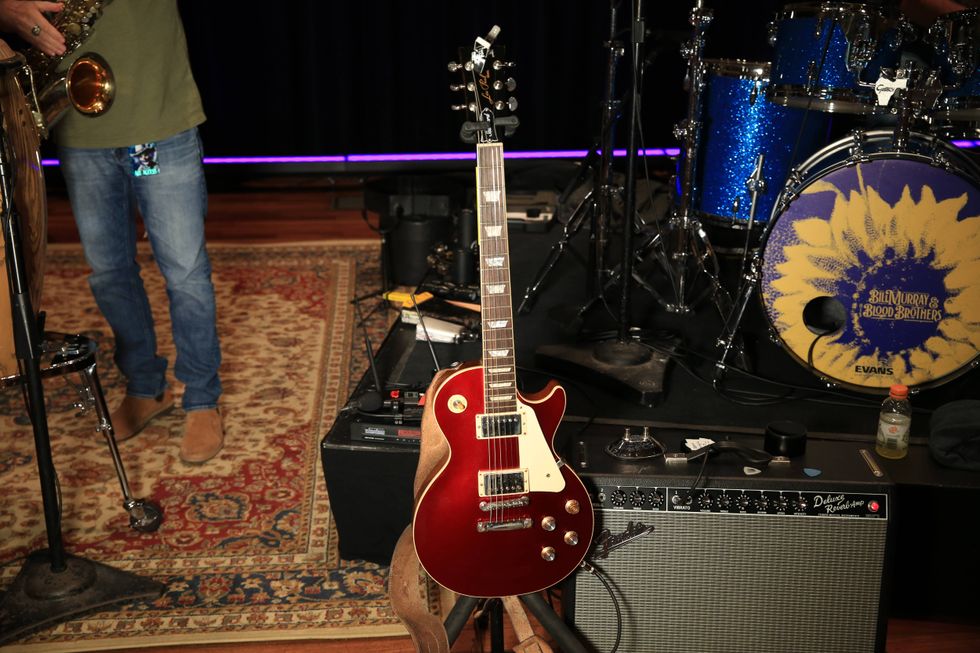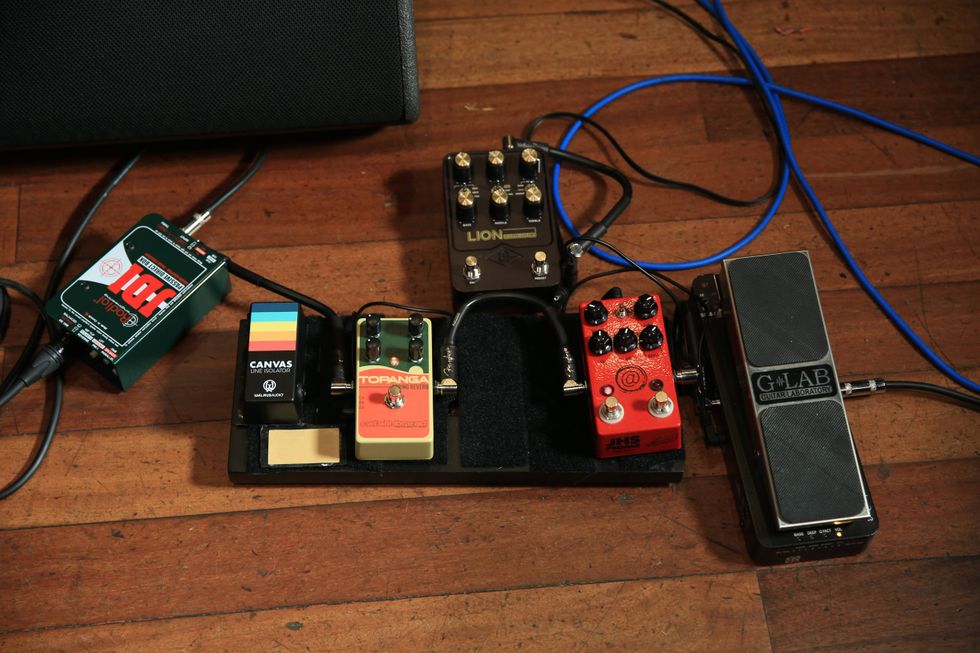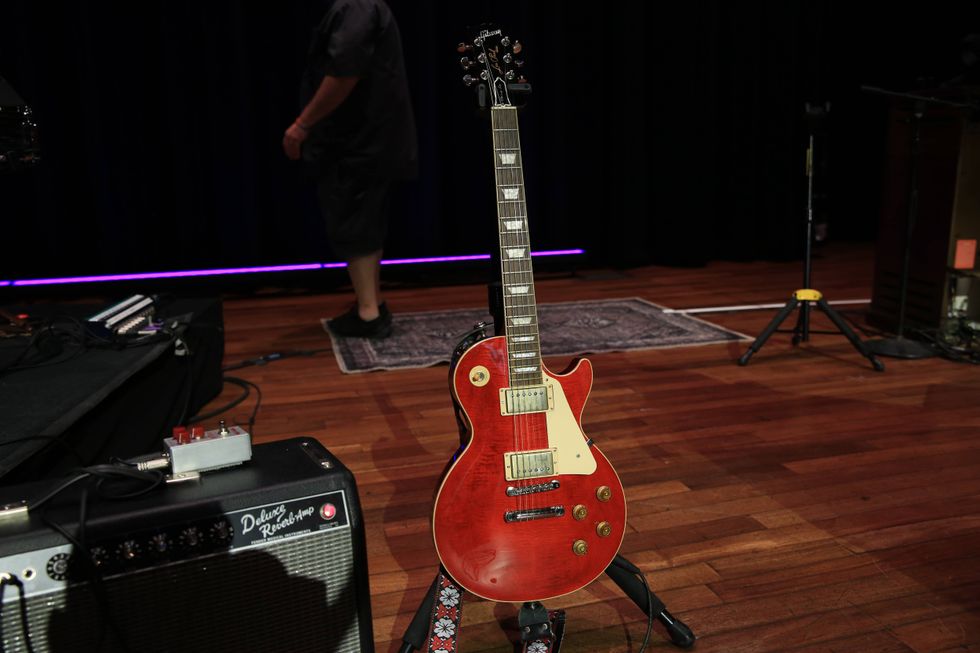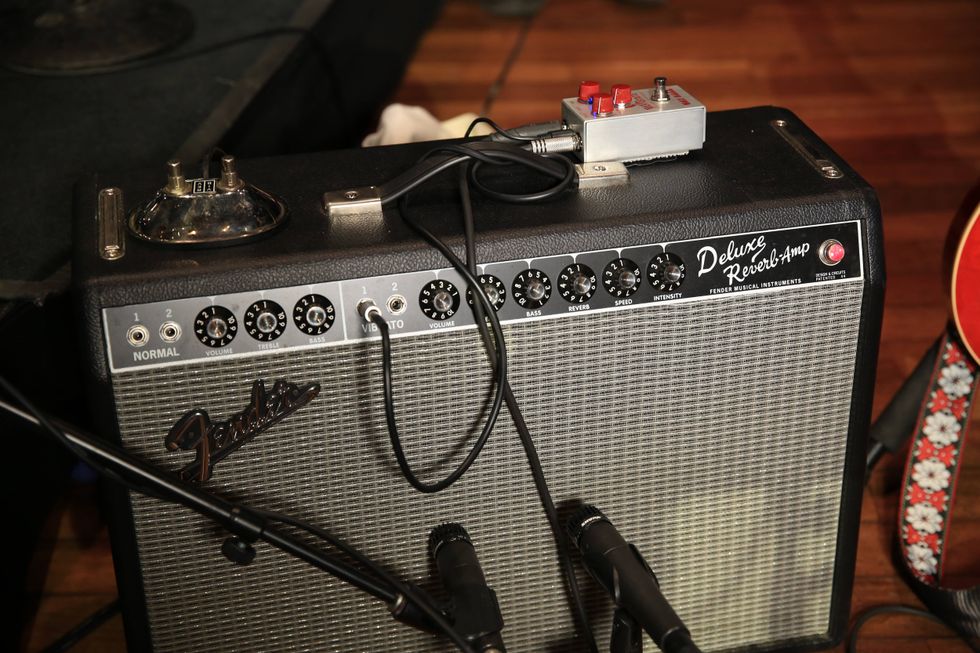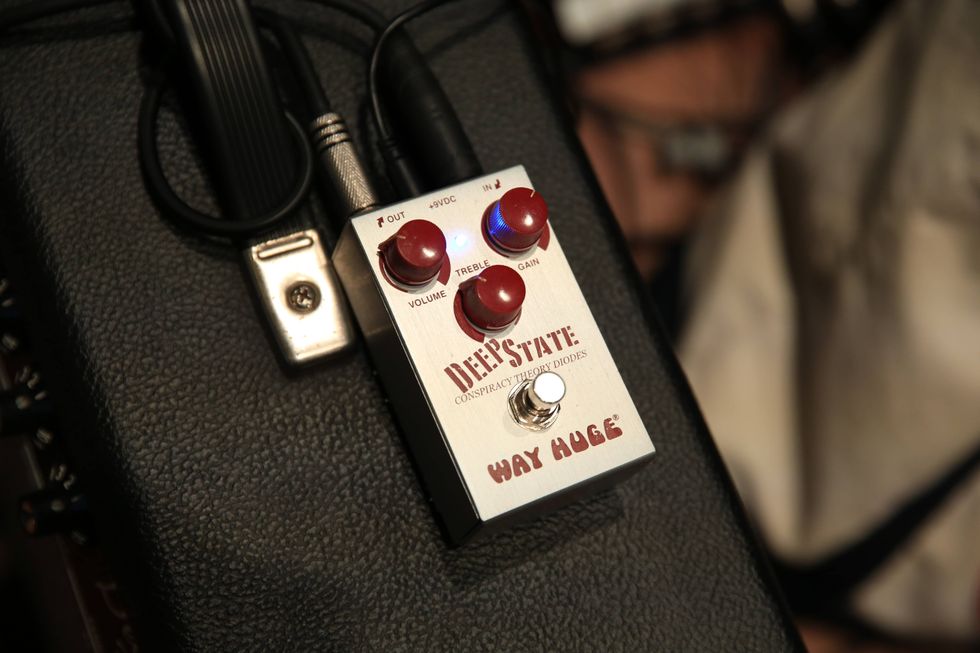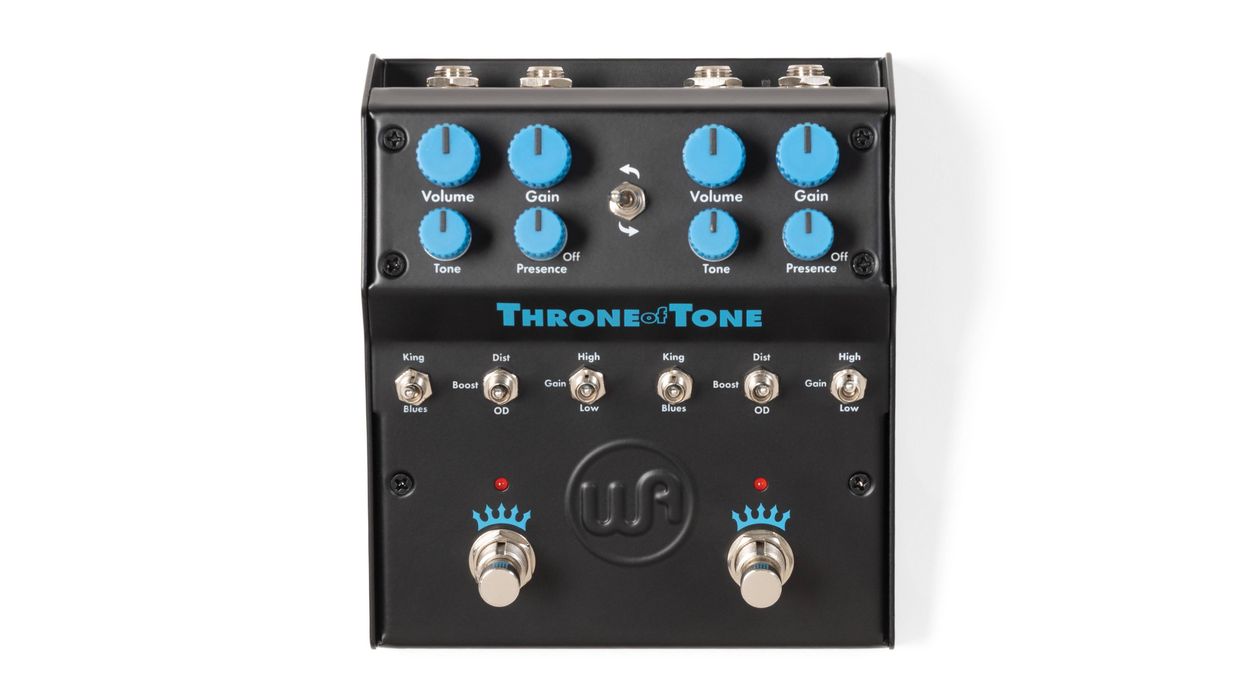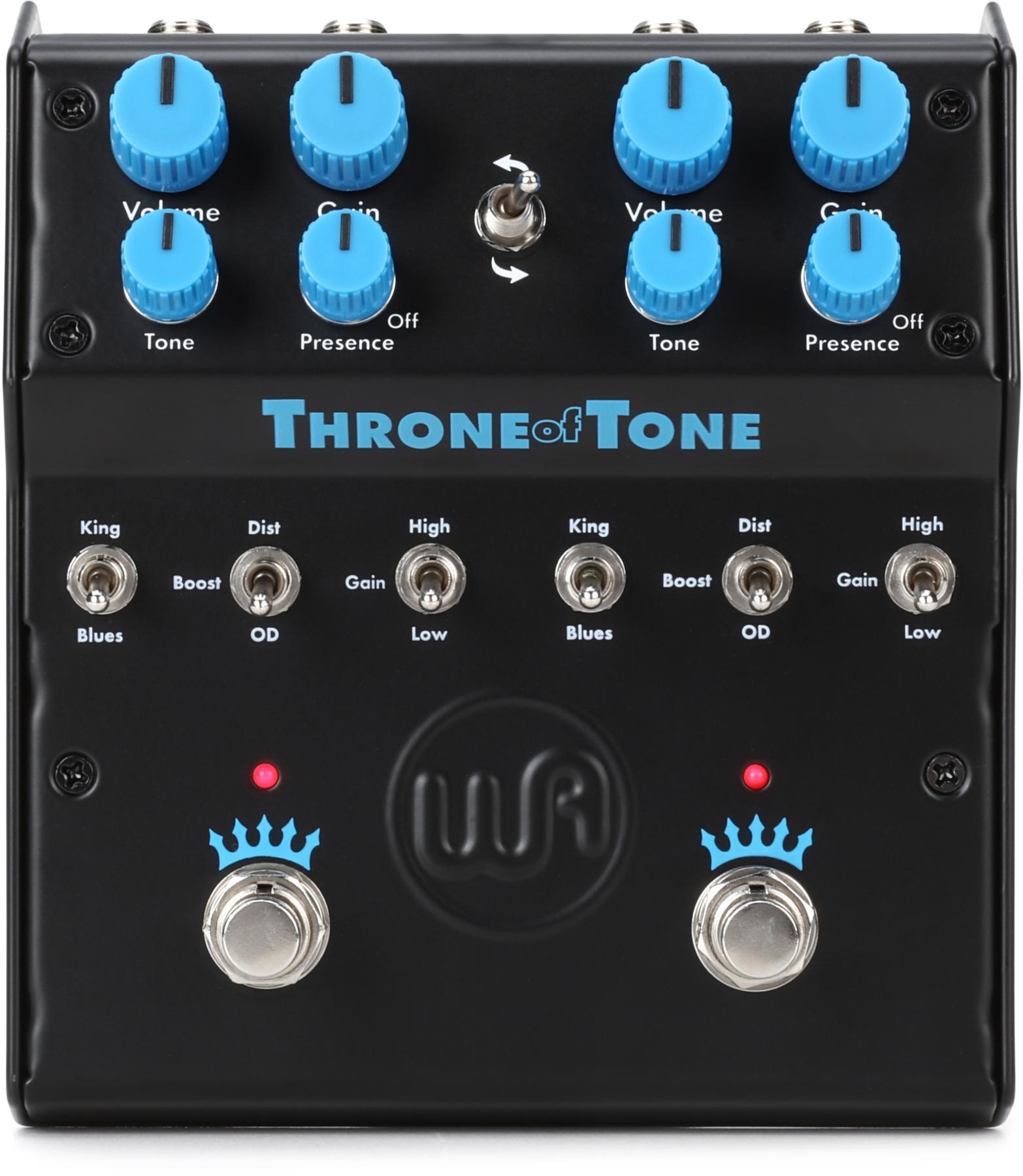Premier Guitar's Rebecca Dirks is on location in Rockford, IL, where she catches up with Joe Bonamassa's tech Mike Hickey who details Bonamassa's current solo rig.
Guitars
Bonamassa brings along an arsenal of guitars that includes both vintage and modern models. Among them is a Gibson Joe Bonamassa signature ES-335, a cherry '64 Gibson ES-335, '63 Gibson non-trem Firebird (given to Joe by a fan), '66 Gibson Firebird I, a Historic Makeover Les Paul replicating Paul Kossoff's stripped '59 LP, a Collector's Choice Historic Les Paul modeled after Bonamassa's '60 Les Paul with Bigsby, Ernie Ball Music Man Dark Morse, Historic Makeover Les Paul goldtop with Bigsby, Ernie Ball Music Man baritone/standard doubleneck, and three '59-'60 Gibson Les Paul Sunbursts. For acoustics, he has four Alvarez WY1 models with his preferred electronics that came stock in the model, and a Gibson Songwriter as a backup.
He was traveling with three of his six original golden-era Gibson Les Pauls: Spot (left) Principle Skinner (middle) and Runt (right). Spot is a ’59 that’s been refretted and had a Bigsby that was removed in the ’80s. Skinner (purchased from the Skinner Auction House) is a ’59 that Joe had refretted by Joe Glaser. Other tweaks include additional thumbscrews under the bridge and the tuners swapped to replicas from Martin Six String Customs for stability. Runt is a ’60 that once had a Gibson Amps decal on the body, hence the dark marks, and has a slimmer neck than you would see on a ’59.
Bonamassa uses .011–.052 strings with fairly high action—which he's used to from touring extensively—and Herco gold Dunlop Jazz III picks.
Amps
Bonamassa's amp lineup is ever-changing depending upon the night. He'd been using one 50-watt vintage Marshall with a Diaz Vibramaster for reverb on the inside cabs, and a Marshall JCM 2000 Dual Super Lead (not pictured, facing reverse) on the clean channel with no EQ for the outside cabs (with delay and rotary effects in the loop). He keeps a second 50-watt Marshall, a Suhr SL68, and a Friedman Dirty Shirley prototype onhand just in case.
When we caught up with him, Joe was testing out the Suhr in lieu of the Marshall/Diaz, which was having noise issues in the venue. However, he switched back to that combination midway through the show. The amps go through four '68 Marshall cabs with original Celestion Greenbacks. The plexiglass in front is his signature ClearSonic amp shield to keep the stage volume under control.
The acoustics go into a Vintech X73i compressor and preamp.
Pedals
Bonamassa's pedalboard starts with his signature Dunlop Cry Baby wah into a Fulltone Supa-Trem into a Dave Friedman splitter. From there, the signal goes to the Dunlop Bonamassa Fuzz Face, Way Huge Pork Loin, original Ibanez Tube Screamer (his primary effect for gain), MXR Micro Flanger, and MXR FET Driver, with the Boss DD-3 and Hughes & Kettner Rotosphere in the loop of the Marshall JCM 2000s.

